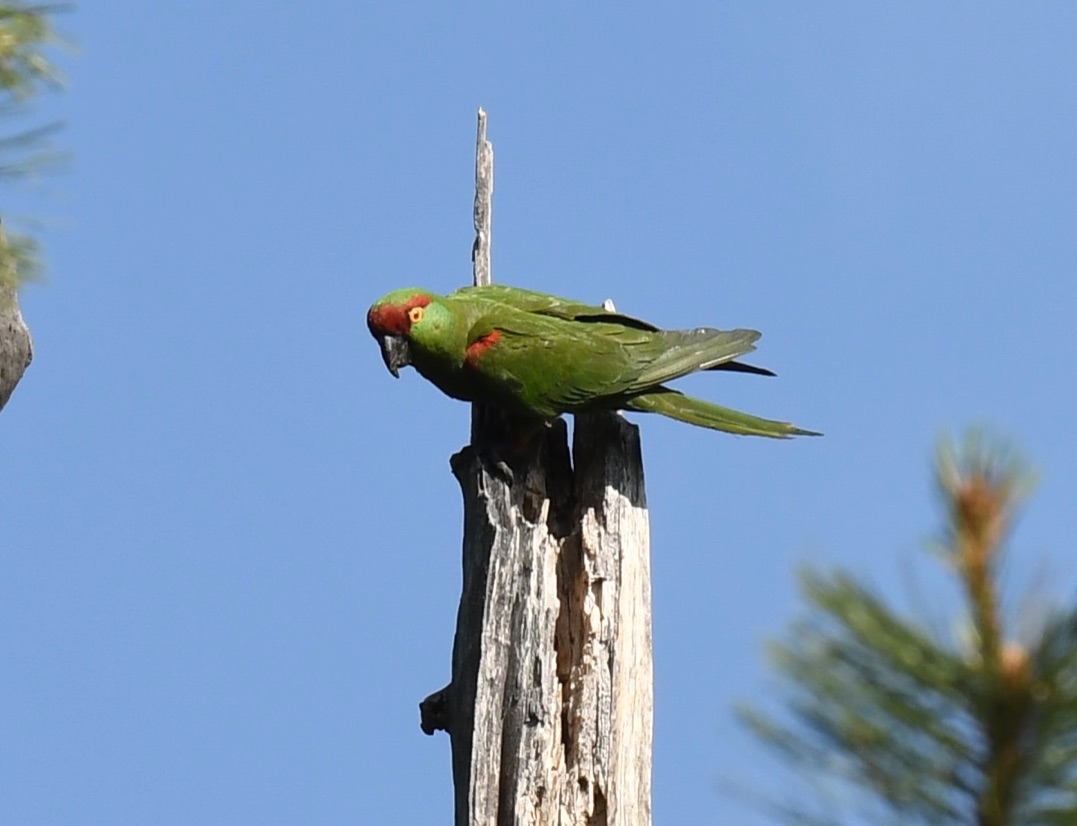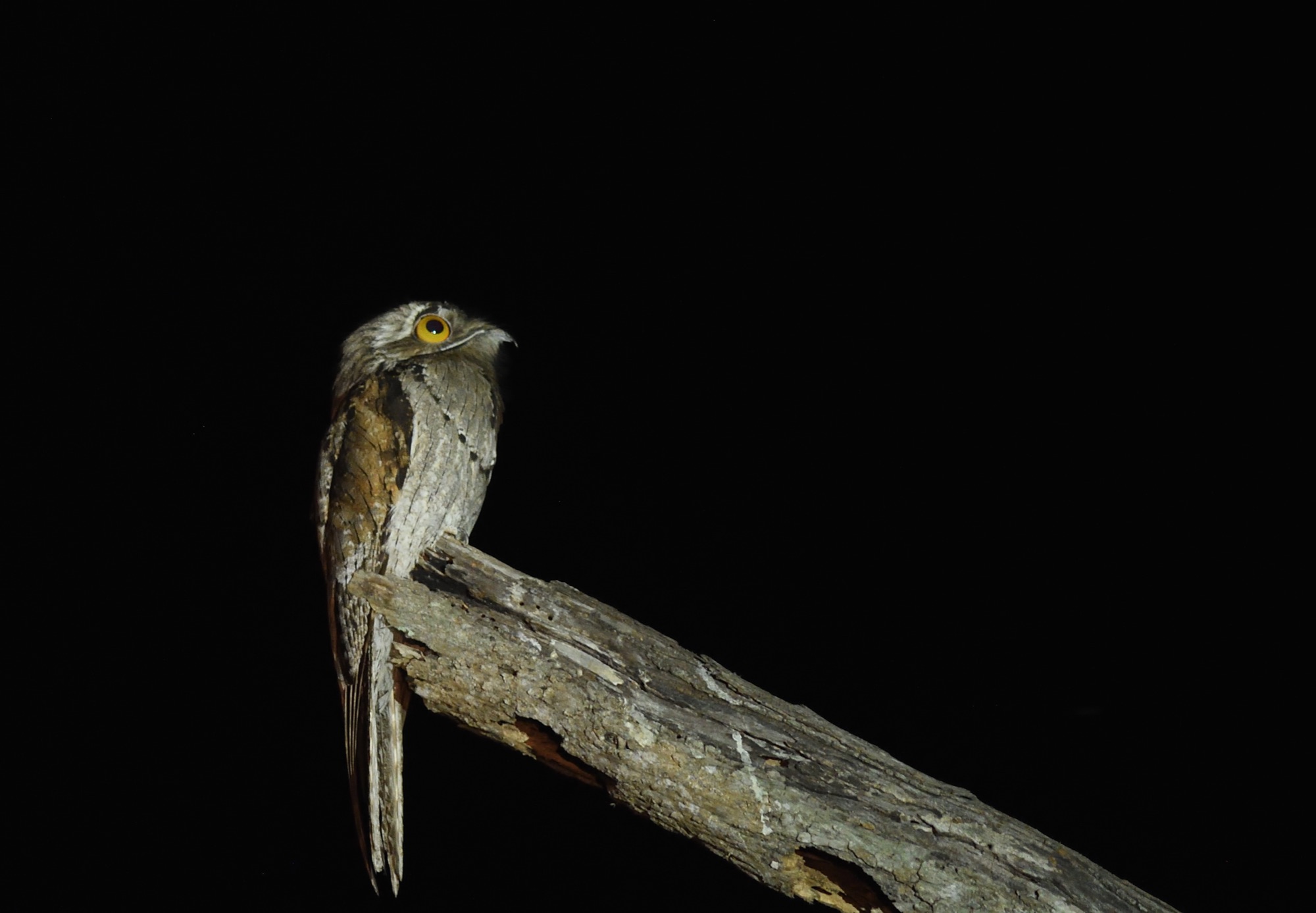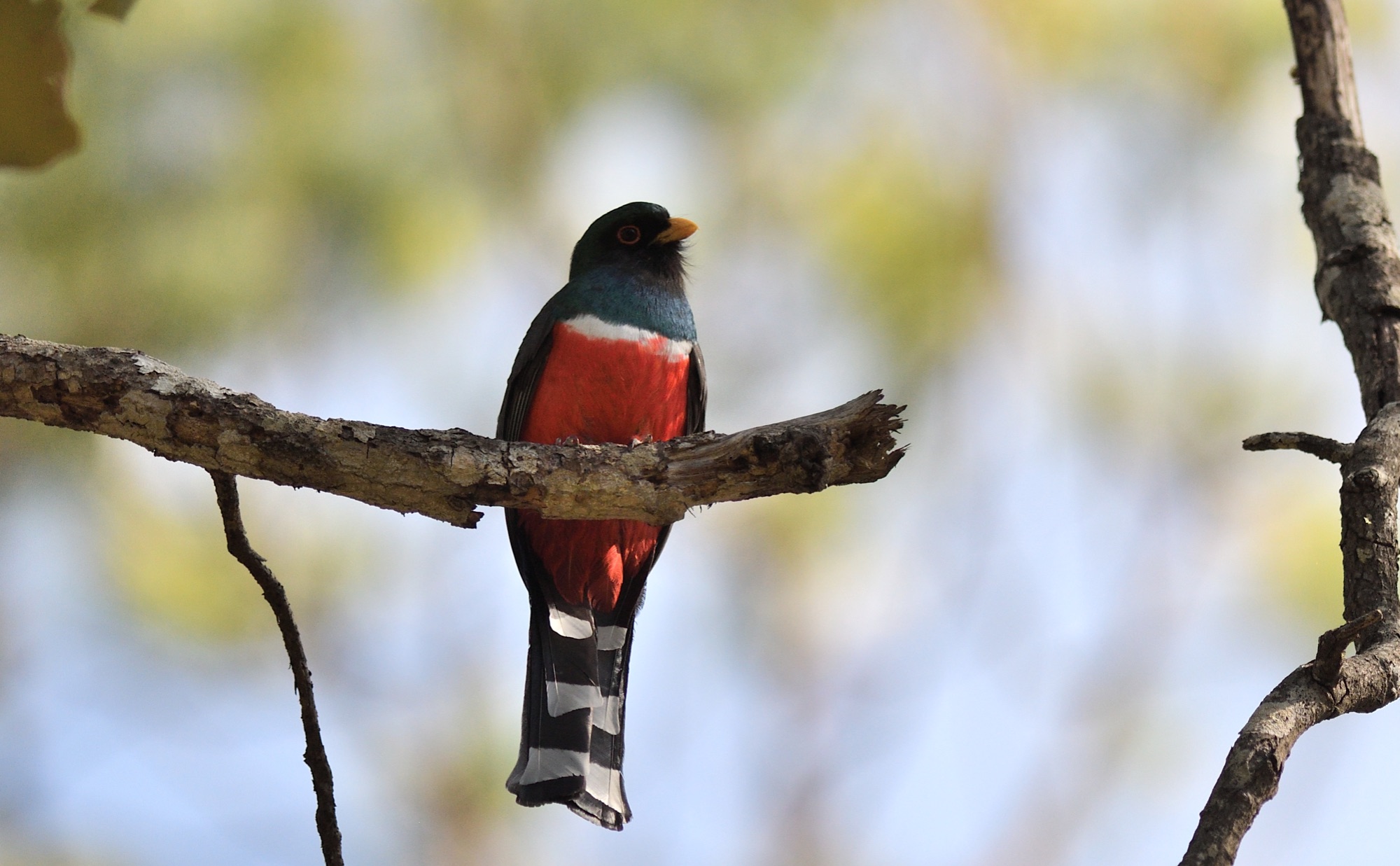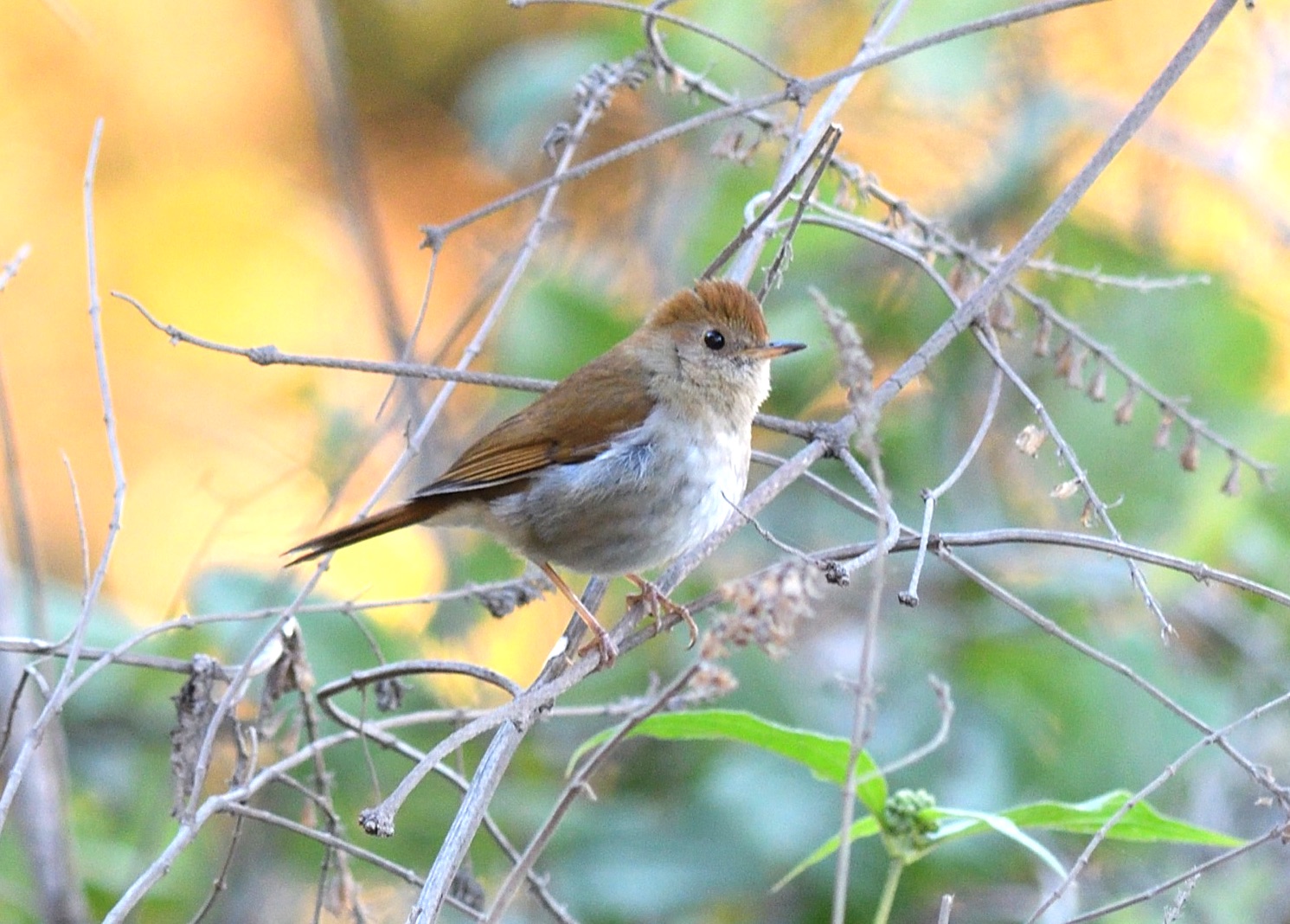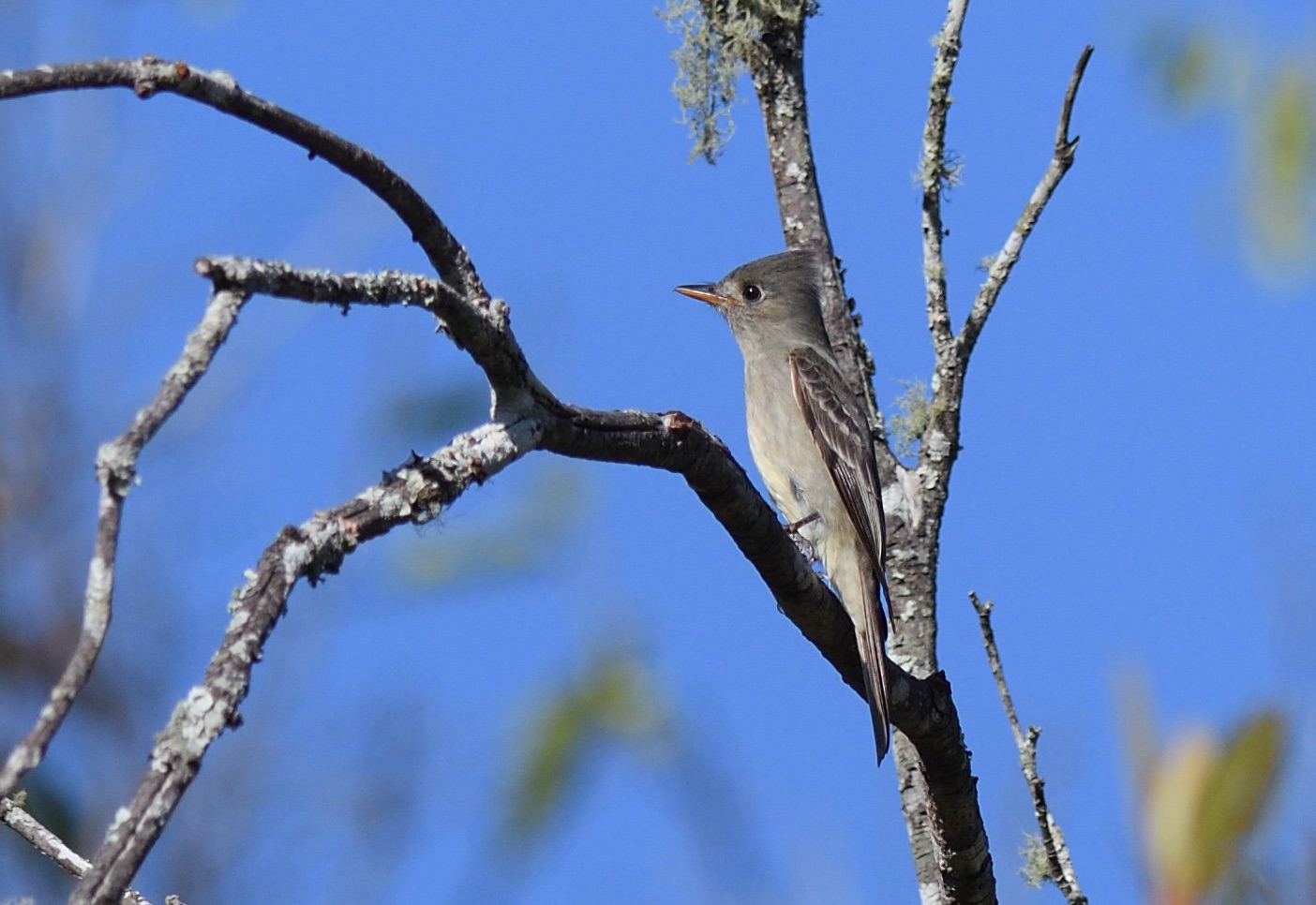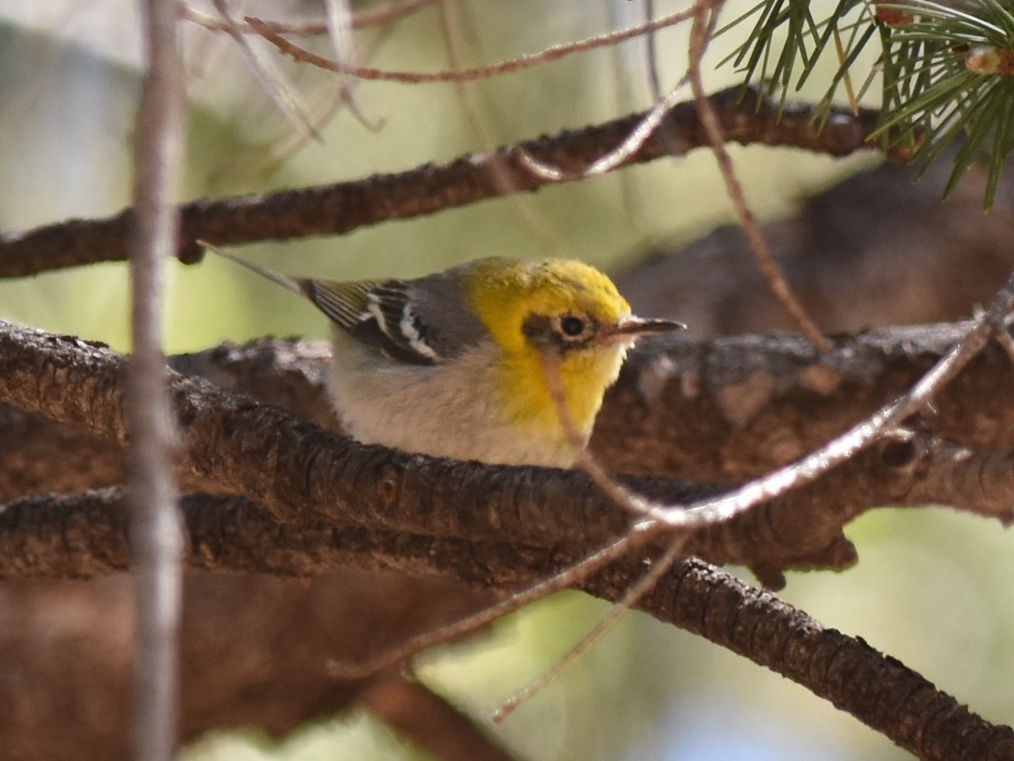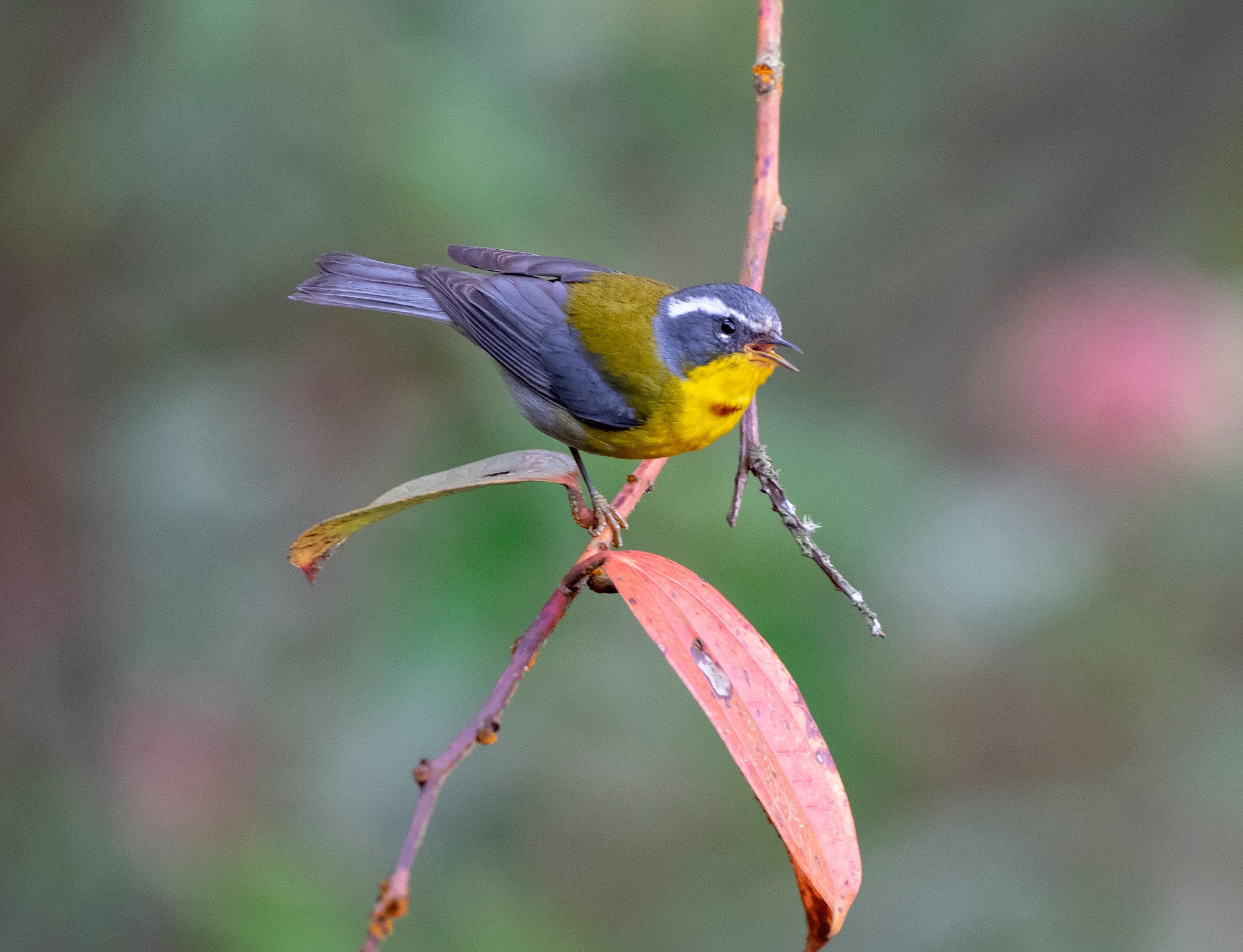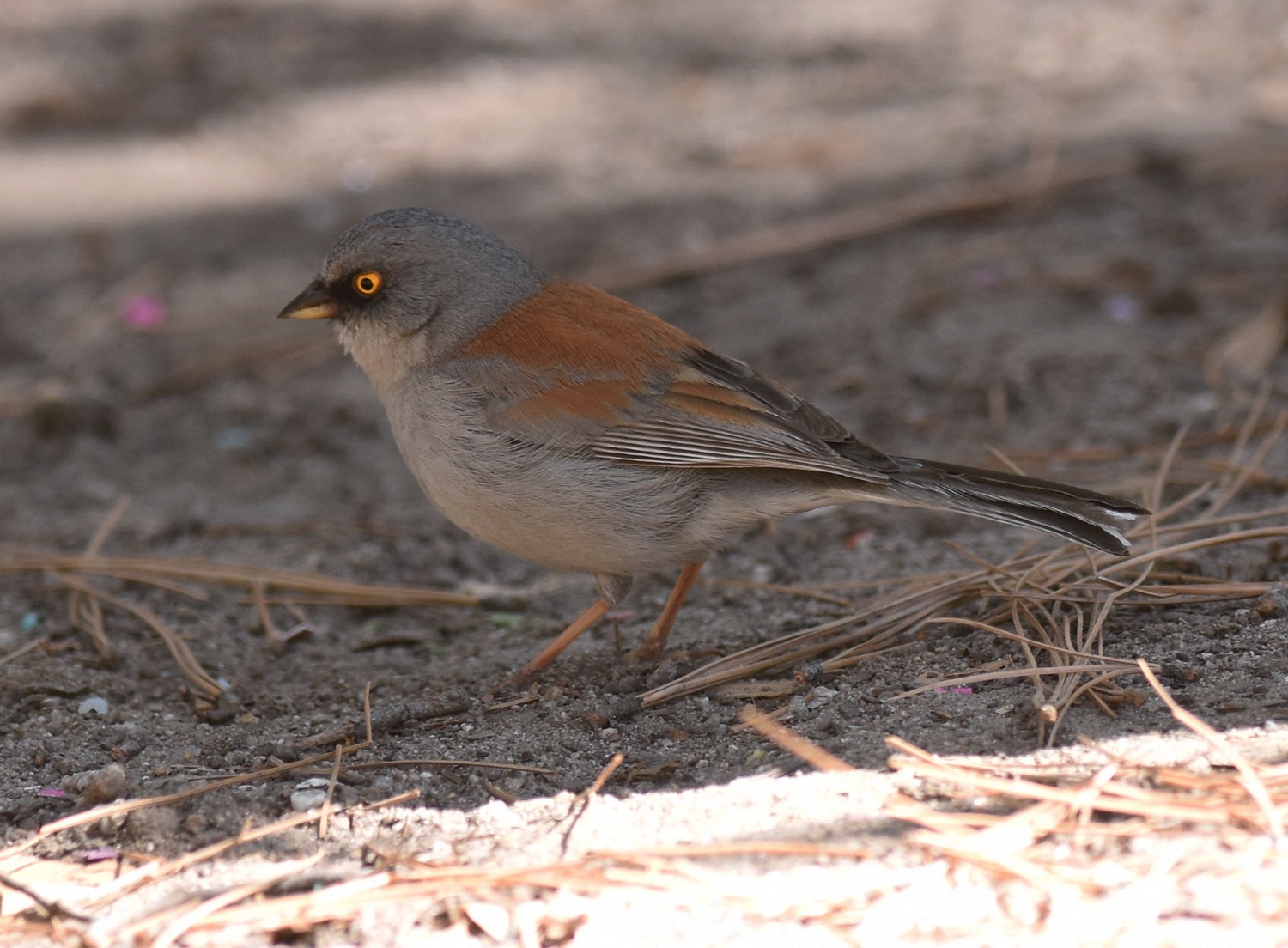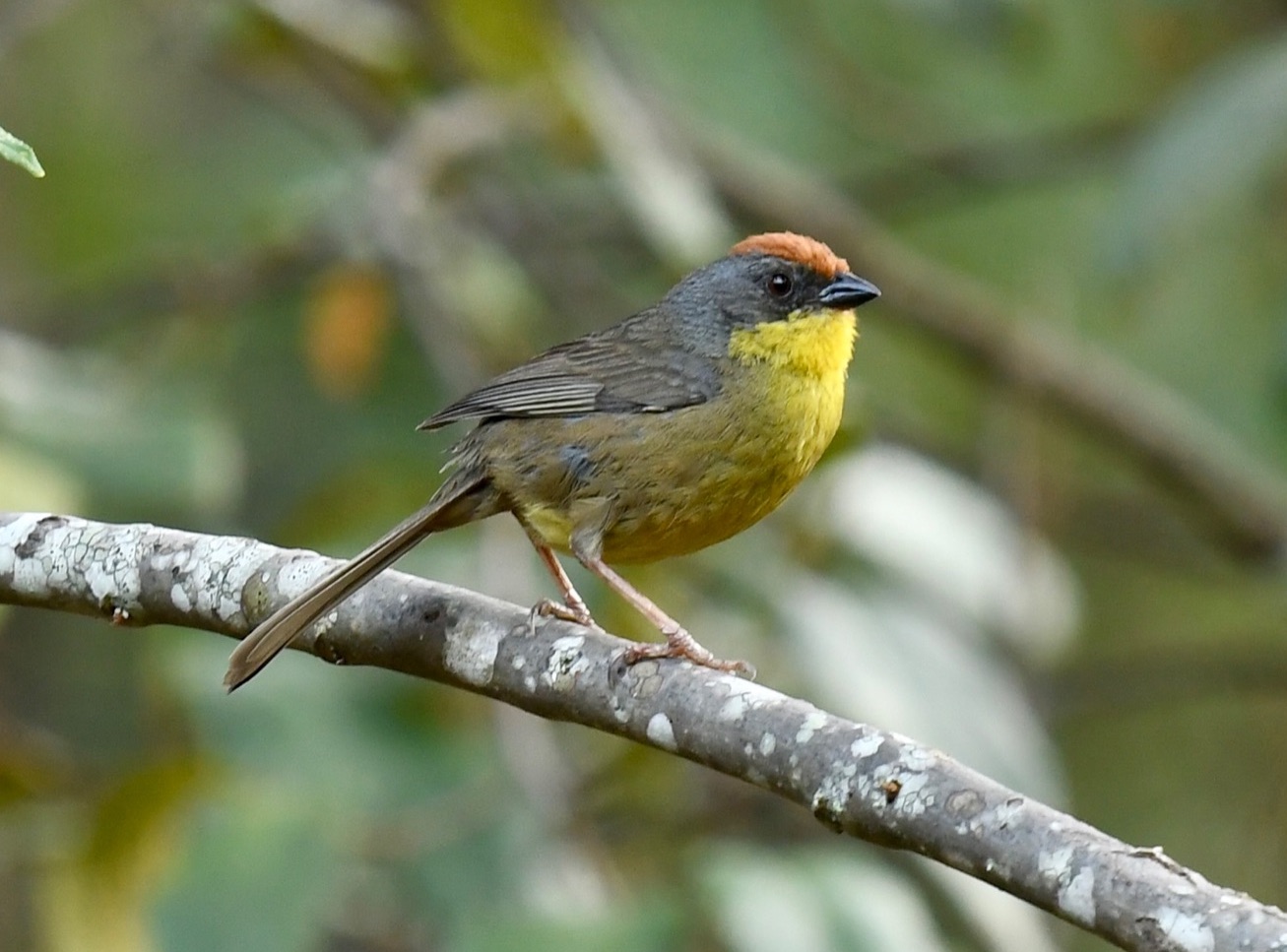NORTHERN MEXICO ENDEMICS 2025
Day 1 ARRIVAL INTO CHIHUAHUA CITY - 7th July
Plan on arriving today into Chihuahua city, where we will spend the night.
Days 2 - 3 MADERA CANYON
It's going to be an early departure as we set out on the four hour drive to Madera town, a perfect location amidst the temperate pine forest of the Sierra Madre Occidental. Our first afternoon will be spent at the Endangered Thick-billed Parrot nesting area, situated in a protected section of forest. The other main target here is the much-wanted Eared Quetzal, a species that breeds in quite reasonable numbers in this area.
Other species present include Montezuma Quail, Mountain Trogon, Black-chinned & Broad-billed Hummingbirds, Brown Creeper, Greater Pewee, Townsend’s Solitaire, Bridled Titmouse, Mexican Chickadee, Hutton's Vireo, Olive, Grace's & Red-faced Warblers, Spotted Towhee, Woodhouse's Scrub Jay, Black-vented Oriole, Black-headed Grosbeak and Yellow-eyed Junco. On our last visit we also had crippling views of Whiskered Screech-Owl as well. Overnight in Madera town.
Day 4 MADERA - CHIHUAHUA CITY - MONTERREY
Early birding around Madera, then drive back to Chihuahua city to take flights to Monterrey in the north Mexican state of Nuevo Leon at evening/night (Monterrey international airport ‘Mariano Escobedo’). If we have time then a stop in the desert en-route to the airport could produce Scaled Quail, Burrowing Owl, Greater Roadrunner, Loggerhead Shrike, Cassin's Kingbird, Say's Phoebe, Chihuahuan Raven and Lark Sparrow. Overnight in Monterrey.
Day 5 MONTERREY
An early start will see us birding a mixture of habitats from desert to montane forest, beginning at a Chihuahuan desert locality where the main target is Worthen's Sparrow. There's plenty of other species to keep us occupied in the desert here such as Mexican Jay, Blue-throated Mountaingem, Lucifer Sheartail, Cave Swallow, Long-billed Thrasher, Painted Whitestart, Black-crested Titmouse, and both Botteri’s & Olive Sparrows.. Then we will move to the montane forest of the Sierra Madre Oriental to look for pine forest target species such as Mountain Pygmy-Owl, Long-billed Thrasher, Sulphur-bellied Flycatcher, Hooded Yellowthroat, Colima Warbler, Pine Flycatcher, Altamira Oriole and Russet Nightingale-Thrush among others. Overnight in Monterrey.
Day 6 MONTERREY - SANTIAGO - CUMBRES de MONTERREY NATIONAL PARK
Early morning birding to a hotspot near Santiago town where we will be looking for tropical species such as Crimson-collared Grosbeak, Audubon’s Oriole, Blue-capped Motmot, Morelet’s Seedeater, Blue Bunting, Ferruginous Pygmy-Owl, among many others. After having a late breakfast, we will bird the montane forest of the spectacular Cumbres de Monterrey National Park including visiting a nesting cliff that holds one of the largest nesting colony of the north Mexican endemic (and Endangered) Maroon-fronted Parrot, and also making a few other stops on the way. We could also find Acorn Woodpecker, Canyon Wren, Tropical Parula, Lesser Goldfinch and the endemic Rufous-capped Brushfinch. Night in Monterrey.
Day 7 PARQUE ECOLOGICO CHIPINQUE - GOMEZ FARIAS
We will get an early start to drive up the mountains overlooking Monterrey and bird the Parque Ecologico Chipinque for Thicket Tinamou, Mexican Whip-poor-will, Elegant Trogon, Golden-fronted & Golden-olive Woodpeckers, Dusky-capped & Sulphur-bellied Flycatcher's, Clay-coloured Thrush, Rose-throated Becard, Brown-backed Solitaire, Yellow-green Vireo, Golden-crowned Warbler, Audubon's Oriole, and both Flame-coloured & Hepatic Tanagers.
We then will drive south for about 4.5 hrs to Gomez Farias town in west Tamaulipas State, right at the foothills of El Cielo Biosphere Preserve. Once we arrive, we may have some time in the evening to go birding in the lowlands looking for Tamaulipas Crow, Double-stripe Thick-Knee, Aplomado Falcon, and some chances for Altamira Yellowthroat. Overnight in Gomez Farias. (any of the nights around Gomez Farias may include searches for Tawny-collared Nightjar).
Day 8 EL CIELO BIOSPHERE PRESERVE
We will spend all day in El Cielo Biosphere Preserve, working our way ever upwards through a variety of habitats from subtropical foothill forest through temperate mixed forest to the temperate pine forests of higher altitudes on the eastern flanks of the Sierra Madre Oriental. We will have frequent birding stops as we drive towards Altacima (using a local 4x4 truck with benches in the back) and covering quite a range in altitude as we proceed all the way towards San Jose village. Main targets for today include Crested Guan, Plain Chachalaca, Ornate Hawk-Eagle, Solitary Eagle (rare), Short-tailed Hawk, Red-billed Pigeon, Northern Potoo, Tamaulipas Pygmy-Owl, Mottled Owl, Bat Falcon, Wedge-tailed Sabrewing, Azure-crowned Hummingbird, White-crowned Parrot, Spot-crowned & Ivory-billed Woodcreeper, Barred Antshrike, Black-headed Nightingale-Thrush, Blue Mockingbird, Green Jay, White-throated Thrush, Spot-breasted Wren, Golden-browed& Fan-tailed Warblers, Melodious Blackbird, Yellow-throated Euphonia, Hooded Grosbeak, Red-throated Ant-Tanager and Black-headed Siskin,. Overnight in Gomez Farias.
Day 9 GOMEZ FARIAS - EL AZTECA ROAD
Birding the Gomez Farias-El Azteca Road in the early morning. Best place to try good views of Thicket Tinamous, and sometimes Great Curassows and Red-lored Parrot, as well as endemics like Crimson-collared Grosbeak and Blue-capped Motmot. The road ends at a very good location among sugar cane plantations to look for the endemic Altamira Yellowthroat and hopefully somewhere we will find the tricky endemic Tamaulipas Crow. We will come back to the hotel to have lunch, and then by the afternoon we will visit the Visitor Center of the preserve, which is also amazing for birding from the top of the building and looking for more interesting birds. Overnight in Gomez Farias.
Days 10 LA FLORIDA - BOCATOMA
On our last day in the area, we will be birding the lowlands of the preserve at La Florida and Bocatoma area where we will take a boat trip along a river to see Sungrebe, along with other species such as Amazon Kingfisher and Mangrove Cuckoo amongst others, and then continue birding the area along other roads nearby. By mid-morning we then will start our long drive (7.5hrs) towards Veracruz city. Overnight in Veracruz.
Day 11 GOMEZ FARIAS - CATEMACO
We will drive south and near the coast looking for the endemic Veracruz Wren, and then carry on to Catemaco which is in the Los Tuxtlas Preserve. We will be birding this area for the rest of the day for species such as White Hawk, Grey-headed Kite, Keel-billed Toucan, White-fronted Parrot, Montezuma Oropendola, Rufous-tailed & Buff-bellied Hummingbirds, Green-breasted Mango, Black-cheeked Woodpecker, yellow-bellied Tyrannulet, Olive-backed Euphonia and much more. Overnight in Catemaco, situated in the south-east part of Veracruz State located next to the huge Laguna de Catemaco.
Day 12 SIERRA de LOS TUXTLAS
All morning will be spent in Sierra de Los Tuxtlas searching for the endemicTuxtla Quail-Dove and endemic Long-tailed Sabrewing. Other species include Great & Slaty-breasted Tinamous, Muscovy Duck, Snail, Double-toothed Kite, Black-collared Hawk, Black Hawk-Eagle, Russet-naped Wood-Rail, Scaled & Short-billed Pigeons, Ruddy Quail-Dove, Spectacled Owl, Long-billed Hermit, Long-billed Starthroat, Violet Sabrewing, Slaty-tailed Trogon, Tody Motmot (rare), Spot-crowned Woodcreeper, Rufous-breasted Spinetail, Fawn-throated & Scaly-throated Foliage-Gleaners, Yellowish Flycatcher, Stub-tailed Spadebill, Sulphur-rumped Myiobius, Northern Schiffornis, Green Shrike-Vireo, Chestnut-capped Brushfinch, Chestnut-headed Oropendola and Blue-crowned Chlorophonia. In the afternoon we’ll continue our drive to Tuxtepec or Valle Nacional to overnight.
Day 13 TUXTEPEC - VALLE NACIONAL
We will be birding early in the morning around Tuxtepec and Valle Nacional to search for the endemic Sumichrast’s Wren which inhabits karst outcroppings in central Veracruz and adjacent northern Oaxaca. Any fruiting tree can hold some really interesting species such as Emerald Toucanet & Collared Aracari, whilst the regional-endemic Curve-winged Sabrewing and White-bellied Emerald can also be present. We will be birding on the Atlantic slope of the Sierra de Juarez in lush rainforest and upwards to cloud forest and could rack up a pretty impressive list today with species such as the regional endemics Olive-throated Parakeet & Lesson’s Motmot, along with Long-tailed Wood Partridge, White Hawk, Brown-hooded Parrot,, Central American Pygmy Owl, regional endemic Amethyst-throated Hummingbird, Berylline Hummingbird, Rufous-breasted Spinetail, Mayan Antthrush, Hammond's Flycatcher, Trilling Gnatwren, Slate-colored Solitaire, Orange-billed Nightingale-Thrush, Black Thrush, Unicolored Jay, regional endemic Cinnamon-bellied Flowerpiercer, Black-cowled Oriole, Yellow-winged & Crimson-collared Tanager, Black-headed Saltator and White-naped Brushfinch.
Later in the afternoon we ´ll have a 4 hour drive to Coatepec, and possibly a detour to visit Las Barrancas in case we have missed some species like Yellow-headed Vulture, Double-striped Thick-knee or Grassland Yellow-Finch. Night in Xalapa or Coatepec.
Day 14 XALAPA - VERACRUZ - 20th July
Today we will search for the elusive endemic Bearded Wood-Partridge near Xalapa. Other interesting species include White-faced Quail-Dove, Wedge-tailed Sabrewing, Bumblebee Hummingbird, and Blue Mockingbird. Tour ends in Veracruz in the afternoon, and flights departures should be scheduled for this evening.


